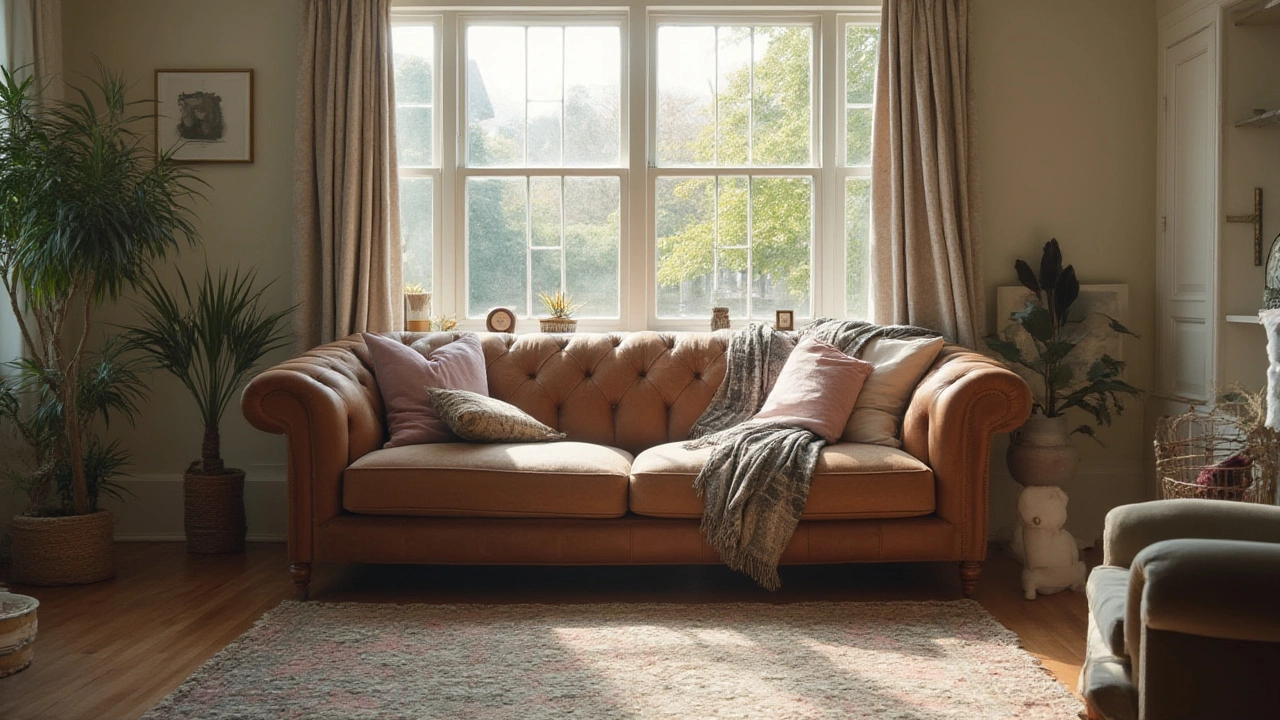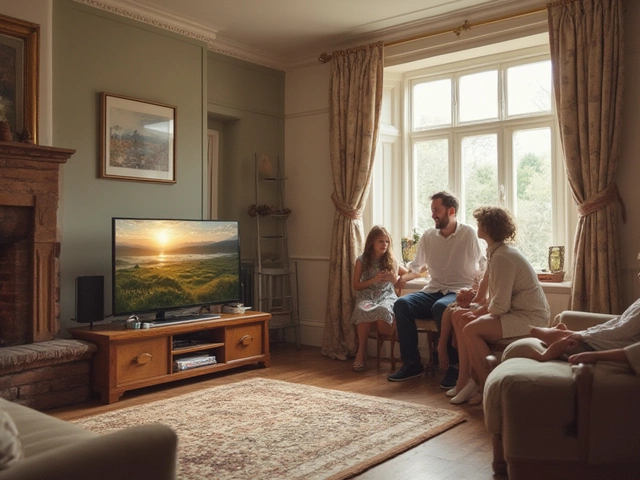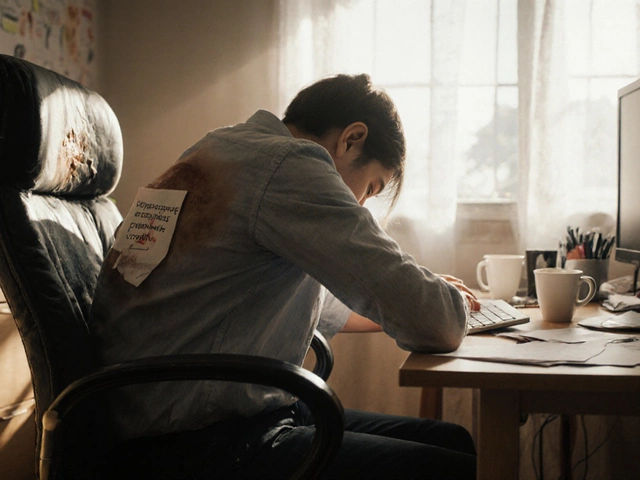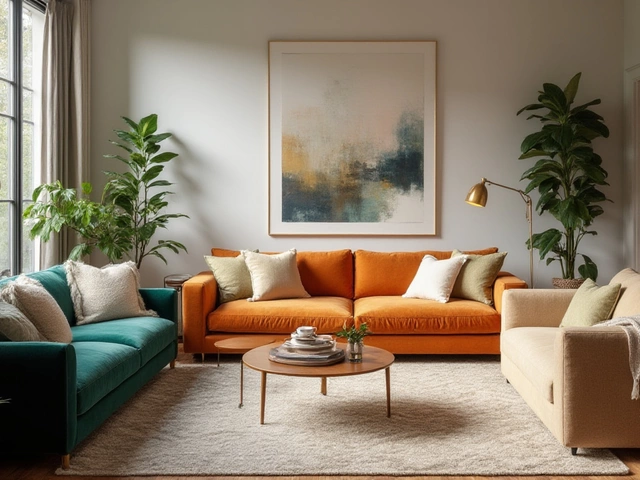Ever walked into a living room and wondered why it just feels... off? Sometimes, it’s the sofa. People stick it anywhere, but the wrong spot can shrink your space, create awkward conversation zones, or invite glare right into your eyes. As much as you might love collapsing onto your favorite couch after work, one misplaced sofa can turn the vibe cold and shut the whole room down. Let’s break down some of the biggest (and most surprising) mistakes folks make with sofa placement—and how you can avoid them for good.
Blocking Natural Light or Windows
Here’s a wild stat I came across: according to a 2024 interior design survey, 73% of homeowners said they felt happier and more relaxed in rooms with more daylight. Yet, I still see so many sofas jammed right up against windows, blocking precious natural light from pouring into the room. Windows are the lungs of your living room—they let the space breathe. When a chunk of upholstery sits in front, you’re basically slapping an eye patch on your home’s vision.
The problem isn’t just about losing sunlight. If your sofa covers any part of a window, cleaning becomes a hassle. Think about apartment living—ventilation is a big deal, and blocking airflow worsens stuffiness, especially if pets like Whiskers use the window ledge for bird-watching. Plus, large couches can trap heat against the glass in summer, raising the temperature a couple degrees in that corner, while in winter, the cold seeps right through into your seat. Imagine flopping down for a TV binge, only to freeze on one side or overheat on the other.
On top of it all, natural light bounces off most wall colors during the day, making rooms look much bigger. Cut off a window and you instantly lose this magic. If you can, leave at least 15-18 inches between the back of the sofa and the window wall, even if space is tight. Slimline sofas or floating the couch slightly forward usually do the trick. Curious about style? Designers actually recommend using low benches or narrow consoles instead, which add storage and don’t block light at all.
And here’s a fun fact from Feng Shui: blocking a window with heavy furniture can literally block your "chi"—the positive flow of energy in a space. The belief is that you’ll start to feel more tired, unproductive, or even irritable in a blocked-off room. Even if you’re not into ancient traditions, it’s worth considering that windows should be clear for atmosphere alone.
Avoid putting a sofa directly under a window unless you have no options. If you must, choose one with a low back, and double-check the height—most window sills reach about 24-30 inches from the floor. Anything above that, and you risk smothering both light and views. A quick test? Sit on the sofa and look out. If you see more fabric than scenery, it might be time to rearrange.
Too Close to Entryways or Doors
Here’s one spot Whiskers seems to love: right in front of any door. Old-school advice used to call for lining up the couch parallel to the nearest wall—problem is, that often sticks it smack in the traffic path. Anyone who’s tripped over a sofa arm trying to answer the door will tell you, it’s not just bad flow—it’s a hazard. Entryways crave open sightlines, not big blockades.
If your sofa is right up against the entrance, guests may feel boxed in the second they step inside. They might even brush right into the armrest if they’re carrying groceries or, in my case, a slightly disgruntled cat on vet day. The entry line should be clutter-free, which means giving your main seating at least three feet (about one meter) clearance on door sides. This ensures people can breeze in and out without squeezing by or risking stubbed toes on the frame.
Consider this quick stat, straight from interior architect Emily Henderson: "If furniture is spaced properly in entry zones, you cut accidental bumps and pet escapes in half." She’s cooked up numbers for open-plan designs, showing that moving a sofa just 10 inches off a traffic path ups safe movement by nearly 40%. Why risk it?
For smaller rooms, corner sofas create a cozy nook without blocking off access. Floated pieces (sofa facing inward, back toward the wall but allowing walkway) trump placing the long edge along the traffic route every time. It’s not just about function, either. When a couch creates a visible line where one area stops, the whole space gets a clearer structure. The best way to test this? Replay your typical walk into the room. At any point, if you have to shift sideways or say, “Excuse me, sofa,”—that’s your cue to move it.
Another pro tip: if your door swings into the room, make sure the door swings fully open without whacking the sofa. A common mistake is forgetting that handles and hinges occupy space, too—don’t eyeball it, actually measure! Grab a tape measure and check your actual clearance. Sliding glass doors are trickier—make sure nothing blocks the full glide. No one wants to wiggle out the patio door while balancing a tray of burgers at your next BBQ.
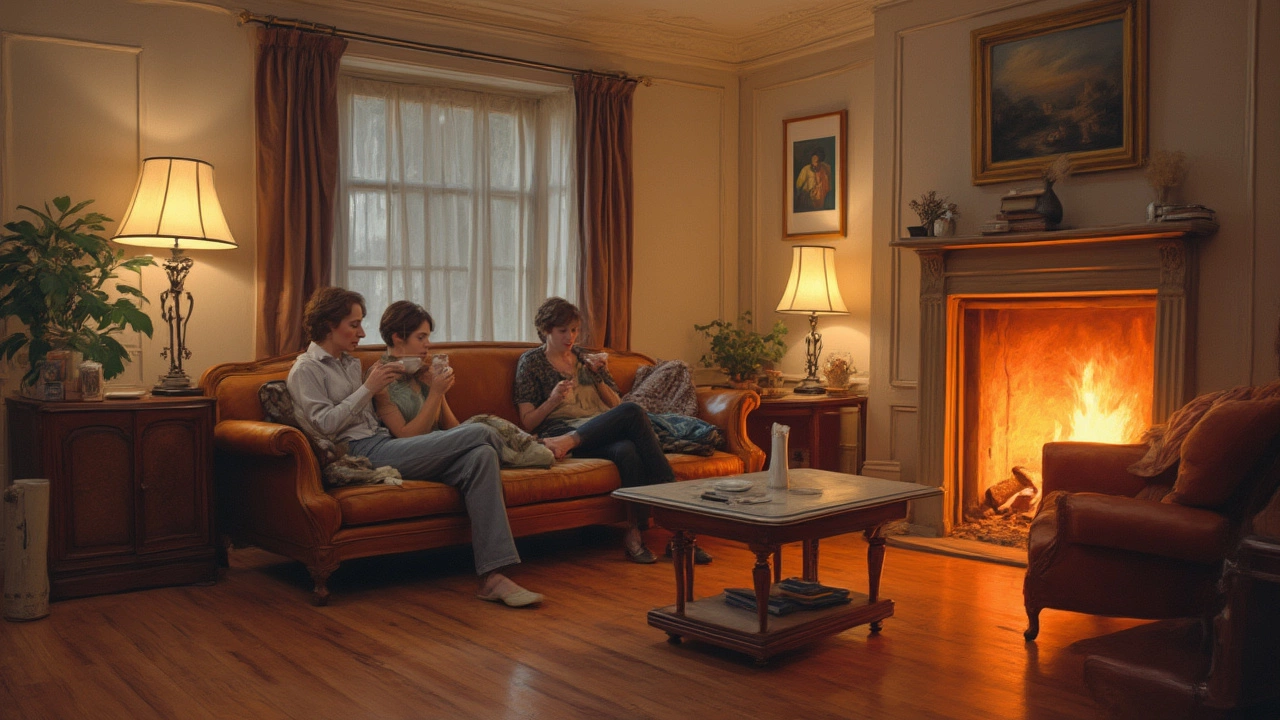
Directly Facing or Backing Up to TVs and Fireplaces
This one’s sneaky. You want your sofa facing the fireplace, TV, or both? Sure, that’s the textbook answer. But ever sat with your back glued to a roaring fire or with a TV to your left, so you’re always craning your neck? After a while, you’re not cozy, you’re in a chiropractor’s office.
Start with the TV. The sweet spot is having it at eye level from the center of the seat—usually about 42 inches from the floor to the center of the TV (raise it if you’re taller than six feet). Placing the sofa too close to the TV creates eye strain. According to the Society of Motion Picture and Television Engineers, the ideal distance for a 55-inch screen is at least seven feet away, but not so far that you can’t see the detail. Check out this table for a cheat sheet on sofa-to-TV distances:
| TV Size | Minimum Distance | Maximum Distance |
|---|---|---|
| 40” | 5 ft | 8.5 ft |
| 55” | 7 ft | 11 ft |
| 65” | 8 ft | 13.5 ft |
Lighting also matters. If your sofa backs up to a TV or faces a fireplace but catches glares from lamps or overheads, you’ll get either a blinding reflection (hello, LED dazzle!), or you end up sweating through movie night. The best orientation is placing the sofa perpendicular (90 degree angle) to both TV and fireplace, if possible. This way, you actually create two zones for different moods. Add a swivel chair or pouf on the diagonal, and suddenly the space feels more dynamic.
Now, the fireplace. Yes, it anchors a room. But couch too close, and you’ll roast your ankles every winter, plus risk drying out upholstery over time. Fire code rules suggest at least 36 inches gap from open flames or hot surfaces to the nearest seating—don’t fudge on this. I’ve seen several sofas crisp up at the edges, mostly from folks who loved marshmallow roasting a little too much.
Stacking the sofa’s back right against a feature wall (with the TV mounted) creates a stiff look. Instead, floating the sofa a few inches forward offers a subtle buffer. It invites more conversation, gives room for a lamp or end table, and keeps things flexible if you ever want to shuffle pieces around later. As one pro famously put it:
“The strongest living spaces let you flow naturally between gathering, watching, and relaxing, without making any one element the ‘boss’ all the time.” — Nate Berkus, interior designer
If your room is tiny, skip huge sectionals and opt for a pair of compact love seats angled together. Add an accent chair if you need more seats. Remember, different zones mean better parties, not just easy TV watching.
Cramped Up Against Every Wall
I get this question a lot: should your sofa be flush against the wall? It’s the most common move in small living spaces, because people want to maximize open floor. But lining up furniture like it’s boot camp actually leaves the middle barren and sterile. Studies show that pulling the sofa even just 6-8 inches away from the back wall suddenly makes the space feel larger and more inviting.
Here’s the science: when a piece is slightly away from the wall, the shadow it casts creates depth, giving the illusion there’s space behind it. This sort of “breathing room” tricks your eye into thinking rooms are bigger, not smaller. Adding an accent table or a plant behind the couch makes it clear the space isn’t shoved to the edge. Plus, skirting boards and radiators get a little space to do their thing, which helps both cleaning and airflow.
Another issue—if your sofa stretches corner to corner, it limits where you can place other furniture. Coffee tables suddenly feel lost, armchairs can’t find a spot, and even basic add-ons like floor lamps have nowhere to go. You also lose access to power outlets, which makes charging your phone or plugging a lamp a headache, not to mention funny contortions while vacuuming (not my favorite Whiskers chore). Consider splitting large sectionals into separate pieces, or picking a smaller main couch with movable accent seats.
Wall-hugging also narrows social circles, since everyone’s facing one direction instead of each other. Scooting the sofa even just 6-12 inches inward can make enough space for stools, poufs, or baskets. In open-plan homes, float the sofa as a space divider: put a console table or even a bookcase behind it, and you magically create two distinct areas without closing the room up. At the end of the day, comfort is king, but a little negative space boosts both style and usefulness.
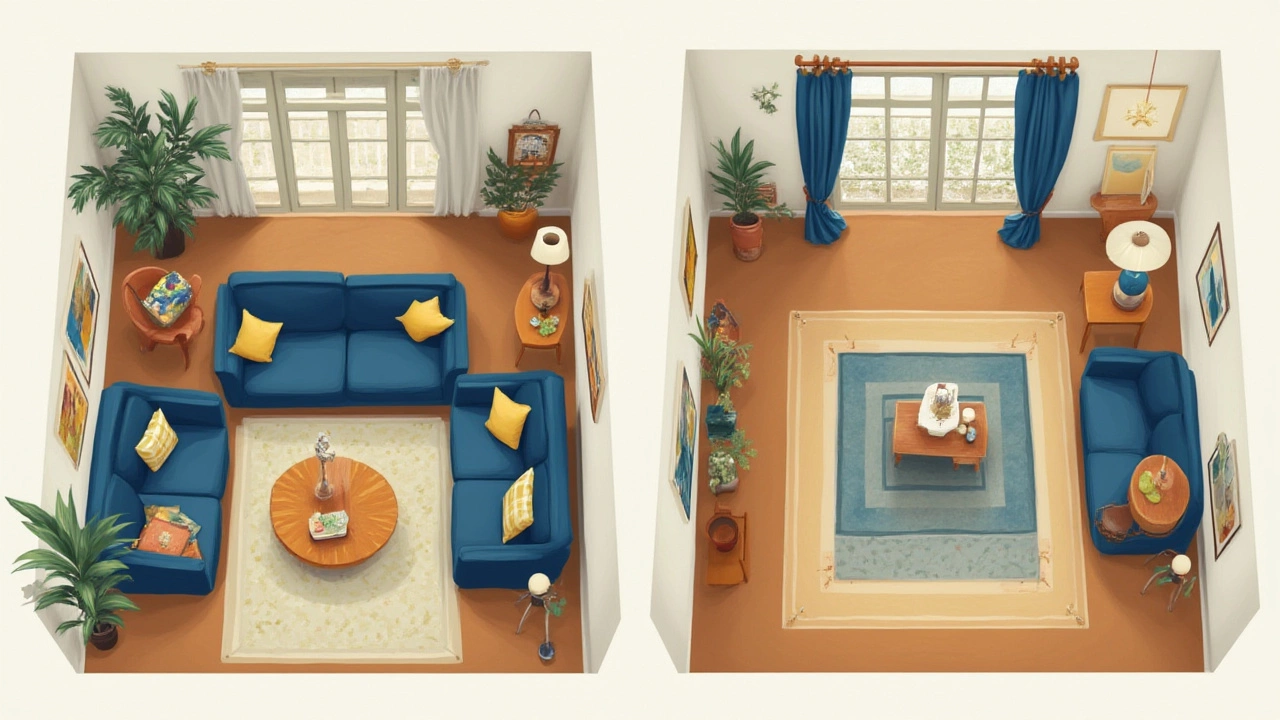
Overly Exposed—Right in the Middle of Everything
On the flip side, plonking your sofa dead center in the room can break up the flow in all the wrong ways. If the path from the kitchen to the hall involves hurdling cushions, you’re asking for traffic jams—even my usually nimble Whiskers has been known to grumble when a tail gets stepped on during dinner rush.
Sometimes folks mean well, hoping to create a dramatic "anchor" for the room. But unless you have a huge open-concept area or a seriously big family room, the effect can feel a bit exposed and, well, awkward. Ever tried carrying snacks through the maze created by a center-placed sofa? It’s like running an obstacle course every time you need a refill.
Corners are your allies for grouping seating, letting you build islands of comfort and conversation, especially if you’re looking to talk or even stretch out and nap. For big open rooms, "floating" the sofa is a smart style move, but you have to manage it. Floating doesn’t mean random—the back generally lines up parallel to the longest wall, leaving enough space behind for walking (minimum 30-36 inches), but pulled away from both walls and windows for that cozy island feel. Add a rug, place a statement coffee table in front, and it suddenly clicks visually.
If you’re going for a central position, always balance it by placing side chairs, plants, or small tables nearby, so it doesn’t look accidental. In my own place, I learned this lesson quick the first time I stubbed my toe on the corner of the coffee table lurking just behind the sofa. Map out the footpaths people use most, and make sure you’re not blocking the natural way people want to move. If in doubt? Roll up the area rug and do a few "test walks" with the furniture in new places. If you find yourself zig-zagging too often, shift things again.
Here’s a rapid-fire list of places to avoid:
- Don’t shove against radiators or AC vents — upholstery hates direct heat/cool and will wear faster.
- Avoid major glare spots—direct sun can bleach fabric fast and add to utility bills by upping cooling costs.
- Keep cords and cables hidden—setting up right over power strips is tempting, but it’s an eyesore and a trip risk.
- If you entertain, leave at least 20-24 inches between the coffee table and sofa so knees aren’t banging every sit-down.
Choosing the right spot for your sofa comes down to function, comfort, and a dash of science. It can be as simple as respecting the walkways or as impactful as letting daylight shine in. Bad placement can cramp your style—and honestly, make even the most beautiful furniture fall flat. So before you stake your claim with a new couch, check your traffic routes, peek at the view from every angle, and do the sunlight test. You don’t need a pro just to figure out where where not to place a sofa. Just a critical eye, a tape measure, and a few ideas from my own roommate—Whiskers the cat—will get you pretty close to living room greatness.
